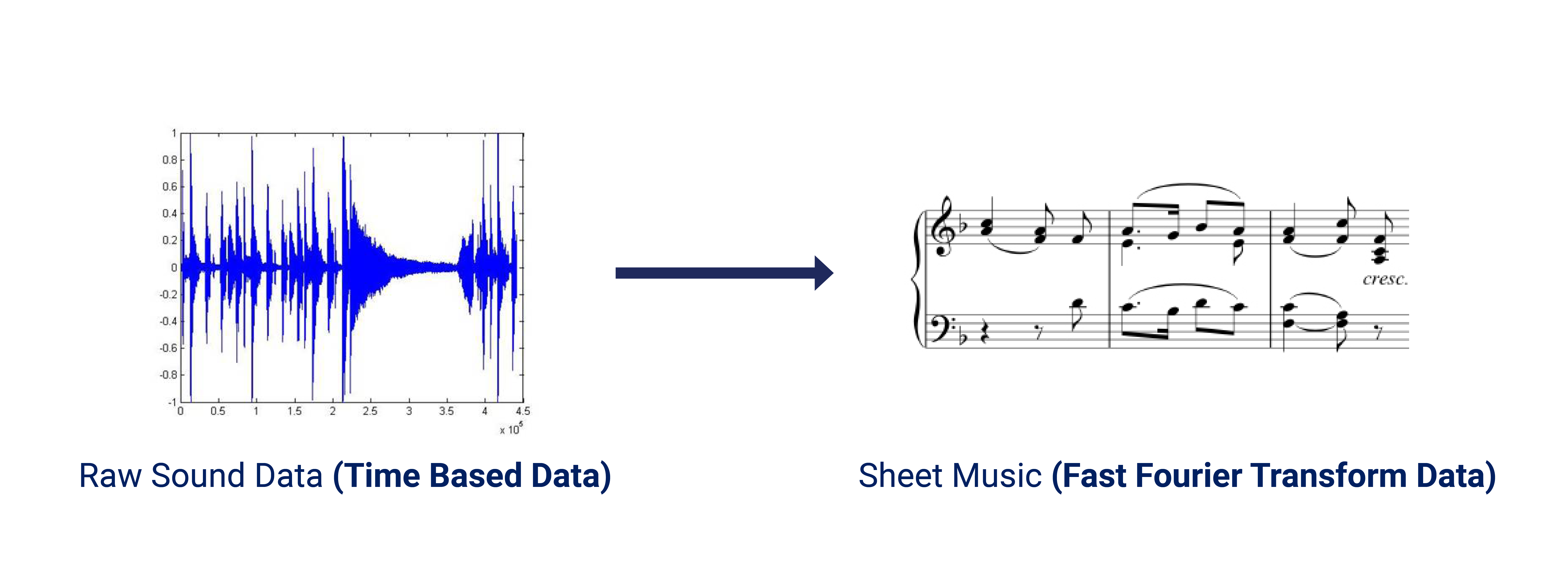A Guide to the Challenges of Vibrational Condition Based Maintenance for Legacy Aviation Hardware
The benefits of Condition Based Maintenance (CBM) algorithms are well known – they improve availability of reliable equipment and help reduce maintenance costs. However, the challenges of implementing these algorithms on legacy hardware can be significant. This article explores some of the key challenges involved in bringing CBM algorithms to fruition in a legacy aviation setting.
Initially, if one is not following the correct data protocols, they risk missing out on insights. In airline applications, failure of a component is detrimental to the process. That’s a big deal. – Later, we highlight the best practices to overcome these challenges and ensure you’re implementing the correct data practices to reduce risk, maximize success and stay ahead of the competition.
So… how do you optimize vibrational Condition Based Maintenance on Aircraft and Rotorcraft? Some of the most frequently asked questions Freya Systems has received when working with clients that have legacy aircraft hardware in their fleet are:
- How can we improve the Condition Based Maintenance performance of our older platforms?
- Are there any insights we can garner to optimize our existing rotorcraft aircraft maintenance operation??
- How can we overcome the vibrational CBM+ Challenges on old aircraft hardware?
One of the main challenges in working with legacy hardware is the lack of data streaming capabilities. This can make it difficult to gather the necessary data for CBM algorithms and can lead to poor decision-making. Another challenge is limited onboard processing ability and storage space. This can make it difficult to run complex CBM algorithms. Finally, communication between different parts of the organization (e.g., between engineering and maintenance) can be difficult, leading to a lack of understanding of the potential benefits of CBM algorithms. In addition to these surface-level issues, only when one has an interpretation of the data, do you encounter the struggle of adjusting for aircraft variability, etc.
Despite these challenges, there are best practices that can help organizations overcome them. First, it is important to work with a partner who understands the unique challenges involved in working with legacy hardware. Second, it is important to have a clear understanding of the data requirements for CBM algorithms. Third, it is important to invest in tools and processes that will allow for the easy collection and analysis of data. Finally, it is important to ensure that interorganizational collaboration, along with its corresponding communication channels, is open and effective.
To establish our credibility, Freya Systems has been a small but mighty player in aviation fleet defense readiness over the past 10+ years, bringing our predictive fleet management expertise to platforms like CH47, C-17, and V-22 among others. In one case, Freya algorithms enabled our customer to exceed their platform’s readiness by 8%, achieving accuracy greater than 82%. When it comes to rotorcrafts and fixed-wing aircrafts, Freya Systems is a good resource for predictive fleet management expertise.
1. Condition-Based Maintenance – It’s not for everybody.
Often platforms have unique challenges.
Some Platforms do not have the Right Data Requirements (Vibration Based)
To preface, when working with vibration data on legacy systems, achieving meaningful results from collected data can be challenging.
Some problems that aviation platforms can face with legacy systems are
- lack of data streaming capability
- limited process capacity
- insufficient storage space
If these limitations are understood, they can be mitigated to attain better vibration data, resulting in a strong return on investment.
Some Platforms do not Stream Data
On modern equipment, data ingestion tools such as streaming data allows for ingesting live component data at a much richer quality and higher frequency (50 times a second for example). Of course, streamed vibrational data recording at 100 or 200 hertz is ideal, but without that, specific methodologies need to be implemented and organizations are resigned to working with far lower data input.
Ensuring maintenance teams can capture data at regular intervals using good sampling techniques will allow them to advance the insight gleaned from this type of vibrational data.
Some Platforms have Slow Processing Speed Capabilities
All large aircraft process data from component sensors onto a mainframe at a distinct rate and cadence. In legacy systems, this sensor data is limited and infrequent, creating the need for different data modeling techniques.
Aircraft built in the 80s, 90s, and 2000s often have buses (electrical conductors) that can only facilitate recording at a certain speed per revolution or hertz. If an aircraft component is spinning 5 times a second, the industry standard requires that it is recorded at 3 to 5 times that rate, ie. 25 times a second.
These recording rates aren’t typical on older aircraft because of limited processing power. Instead, data scientists must cope with data input at approximately twice a second, enlarging the swath of missing data points and limiting the richness of data inputs.
It is crucial to adapt to the infrequent and patchy processing capability for vibrations on older equipment. Shifting to the data analysis processes laid out below, like benefiting from samples and data regime snippets will show how this can be accomplished.
Some Platforms have Limited Storage Space
In addition to the obstacle of poor processing speeds, aircraft have limited storage space. The quantity of data to store per flight is finite, meaning all available information must be treated especially valuably.
It is common knowledge that a smartphone’s computer is likely more powerful than the central computer on aircraft that were initially designed in the 80s and 90s. A current workaround in the manufacturing industry is to outsource this data collection to a third-party device put inside a component.
Although aircraft computer system modernization does occur, it is done at extreme costs and time sinkage, making it more sensible to develop a new aircraft all together. For just CBM purposes, an organization would not get a return on investment by modernizing aircraft.
Below we lay out a guide to addressing the problems of no streaming data, limited processing capability, and finite storage space. What is the safest and most effective solution to run CBM+ on legacy aircraft?
Data solutions recommended for optimal CBM+ Utilization
So, after looking at vibration data, the goal is to build an algorithm. Here are some data processes to watch out for.
FFT Meaning and Data
Raw sensor data is ingested from aircraft and is difficult to read in its unprocessed form. To transform raw sensor data into actionable data, utilize a Fast Fourier Transformation (FFT). This mathematical equation takes raw time-based data and transforms it into frequency-based data. A FFT allows for an individual to analyze the amplitude of the data at certain rotational frequencies.
The best way to visualize the difference between FFT and Time-based (raw) data is through sound. Recording music and observing the sound waves is similar to time-based data, however, it is a jumbled mess that is difficult to meaningfully decipher. Transforming that data with an FFT turns the raw sound waves into sheet music with notes, pitch, and frequency.

If the data ingestion shows repeated knocks in the vibration, running an FFT enables data scientists to see that the anomalies occur at certain hertz frequencies, allowing one to now isolate issues. This enhanced frequency data collection sheet allows one to understand when and where the aircraft is experiencing vibrational strain, giving more insight into a part’s status.
Vibration Regime Data
FFT data alone doesn’t tell a story. It needs to be paired with regime data to understand the state of flight the aircraft is operating in. Aircraft and especially rotorcraft undergo different stress levels in different regimes. For a helicopter getting ready for take-off, the equipment will vibrate differently than if its hovering above the ground or hoisting weight.
‘Defined Regimes’ are predetermined aircraft parameter data classified into states of operation, whether it is forward flight motion, hover motion, or take-off. Defined regimes are categorized because identical components will vibrate differently through different flight regimes. For example, a component behaves differently during a high-altitude cruise in the winter than during a coastal takeoff in the summer. Climate, altitude, flight mode, and more influence regime data and are imperative to record to correlate stressors on the aircraft’s components to FFT vibrational recordings.
What if there is limited or no access to regime data? Although defined regimes help dissect this data, raw parameter data can also be sufficient and manually matched with vibrational data to get a similar result. This can be achieved by putting filters and constraints on quantitative clusters of raw data like rotor speed, torque, and altitude until an aircraft is in a defined regime. If each sensor parameter is running within certain thresholds, from precedence, it can be determined that the aircraft was “landing” for example.
Combining FFT data and regime data is vital in successfully operating an effective vibrational CBM program for legacy aircraft because of its ability to identify the conditional context of vibration data.
Data Samples & Packets
The distinct, sample-like way older aircraft record vibrational data also needs to be considered.
Vibration data isn’t recorded with some aircraft unless you are in a vibration regime. Also, because some aircraft cannot stream data, they only record data in little packets or samples. This can be 10 or 20-second snippets with the aircraft then not recording for approximately another 15 mins.
To counter this issue, the aircraft records small snippets of data during defined regimes to grasp a sample of component data during specific regimes. Ideally, obtaining as many samples as one can record and store is best: the more data – the more feedback for CBM+ algorithms.
2. You have the correct data parameters. Now, what about Problems associated with Variable Vibration Data?
Aircraft are usually Snowflakes
After one has the vibrational data and all the supporting FFT and regime data, one now has to deal with aircraft variability. Aircraft and rotorcraft are snowflakes, with no two being identical.
This is especially true for helicopters. A CBM algorithm is normally designed to draw a threshold and instruct it to throw a red flag whenever this amplitude exceeds a level of importance, 1.2 for example. For some helicopters, that approach works; however, others may be constantly operating within or above 1.2 for their entire life. Therefore, drawing simple thresholds doesn’t work.
Because of the large number of theoretical regimes and limited data input for mapping, it is almost impossible to fully map out all component conditions. Further, due to the interlinking of thousands of components, no two aircraft or rotorcraft vibrate similarly.
Aircraft exhibit different Vibrational Behaviors across their own Lifetime
Not only are no two aircraft the same, individual aircraft and rotorcraft themselves are not the same throughout their lifetime.
After routine scheduled maintenance, 100% of the time aircraft vibrate completely differently before maintenance and thereafter. Prolonged use, certain flight conditions, and other variables drastically impact an aircraft’s baseline of data.
Looking at an aircraft’s entire history (average or mean data) is flawed because of the non-stationary dynamic life of an aircraft. It is irrelevant that a fleet is operating with the same aircraft and data types. Two years ago, it could have been in completely different vibrational patterns than it is now, so aggregating the data to compare the lifetime data of a helicopter is invalid.
3. Setting up for Success with CBM+
There is no guarantee to always have a successful algorithm
The title speaks for itself. Even with all the correct data hygiene and methodologies, nobody is guaranteed a successful algorithm. There are ways to increase the chance of success, however. Data Science is a science after all and operates through hypotheses tested with data. Sometimes that data does not support the hypothesis.
Some of the issues might be: not having enough good representative failures or the failures are based on too many components, as opposed to isolating one component.
One is not always guaranteed a successful algorithm, so multiple attempts may be necessary.
Define what Success is
It is vital to define what ‘success’ means, so one can evaluate whether it is going to be a successful algorithm or not.
Finding the optimal balance between an algorithm’s false positive vs. false negative outcome is also critical. Too many false positives may open one up to wasted time, money, and resources, yet reduce the risk of data slipping through. However, too few false positives and one risks missing a critical vibration anomaly that could lead to failure. That is a no-no. Accurately defining the thresholds and success of the algorithm is paramount to this balance.
Make sure to have the right problem statement backed up with good data
What is the algorithm trying to solve? Define what the failure modes are and back them up with good data.
Rarely do you have critical failures on an aircraft, especially now with redundancy built in and sensors designed to detect anomalies and degradation well before a concern.
Finding the right parameter values to define a “failure” or “degradation threshold” is the challenge. Determining the failure mode and then acquiring rich data with a high level of samples to build a successful algorithm is the critical path for CBM+ and is one of the most demanding parts of successfully setting up a CBM+ algorithm.
Having the Subject Matter Area of Expertise (the right people involved)
Surrounding your data team with Subject Matter Experts allows for a more thorough, risk-averse operation. Without them, chances for failure grow exponentially.
It’s recommended to never only have a data scientist on a CBM problem. Air engineers service experts familiar with the equipment can relay how it was designed and explain how a part or component operates. Even if a team puts 100% focus on the data, that team needs the right people to tell them if they are catching something or whether it’s a false positive.
Each piece of equipment has different drive shafts for example. Distinguishing which drive shaft and which aspect of the component the data was monitoring needs to be translated to decision-makers so they can respond and operate effectively. Decision makers need good data scientists, statisticians, data experts, engineers, and maintainers all working together and in constant communication.
The Challenges for Vibration CBM+ Algorithms are Real
It is an immense undertaking to successfully operate a vibrational CBM+ algorithm on legacy aircraft hardware, hence why understanding the challenges and how to overcome them is essential. From making sure one has the correct vibration-based data to having the right tools to interpret and classify that data, building a successful CBM+ algorithm requires collaborative subject matter expertise along with clearly defined definitions of success and failure.
Do you need support with your CBM+ needs? Give your team the confidence to make the right data-backed decisions. Reach out and talk to a Freya Systems data scientist today.




